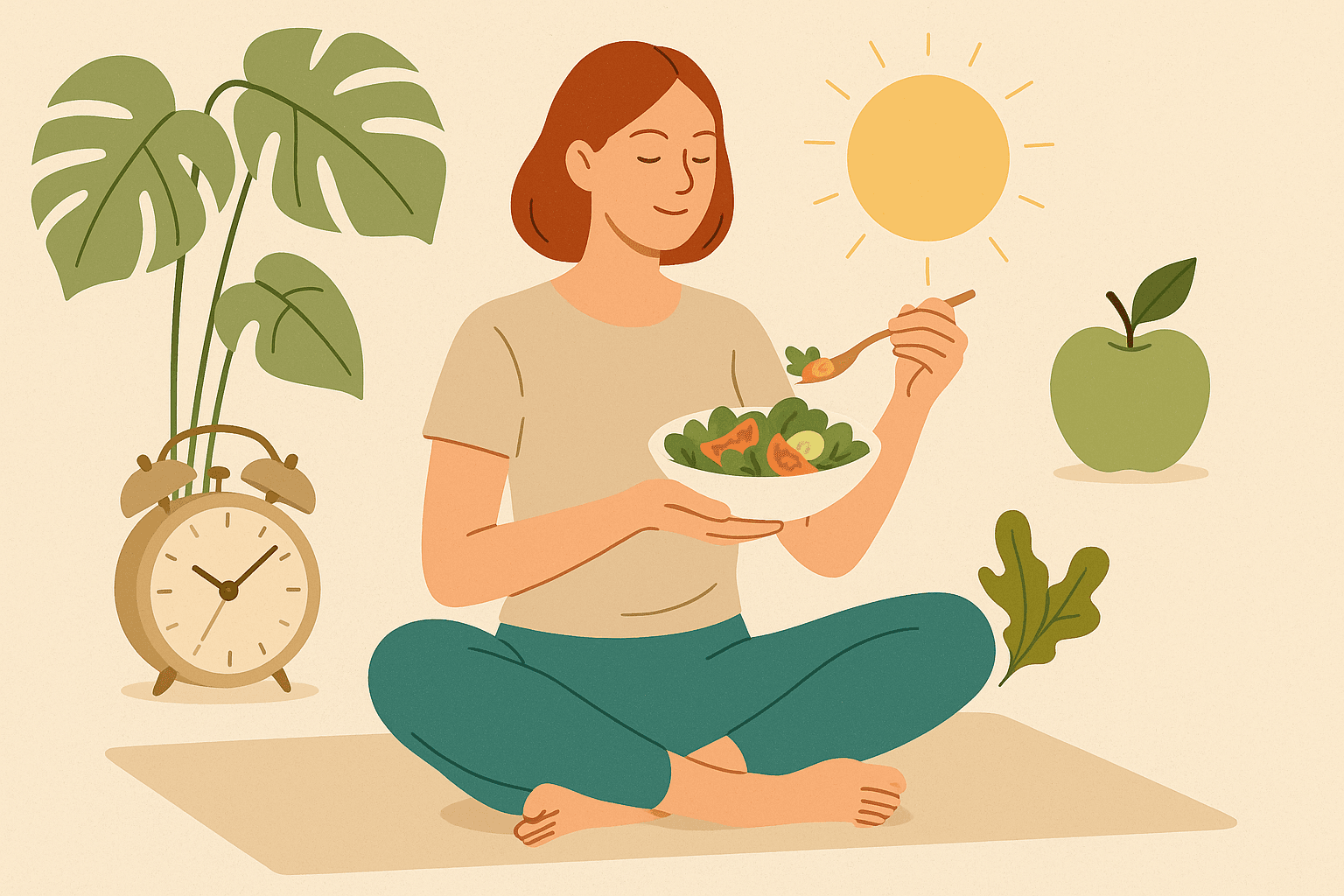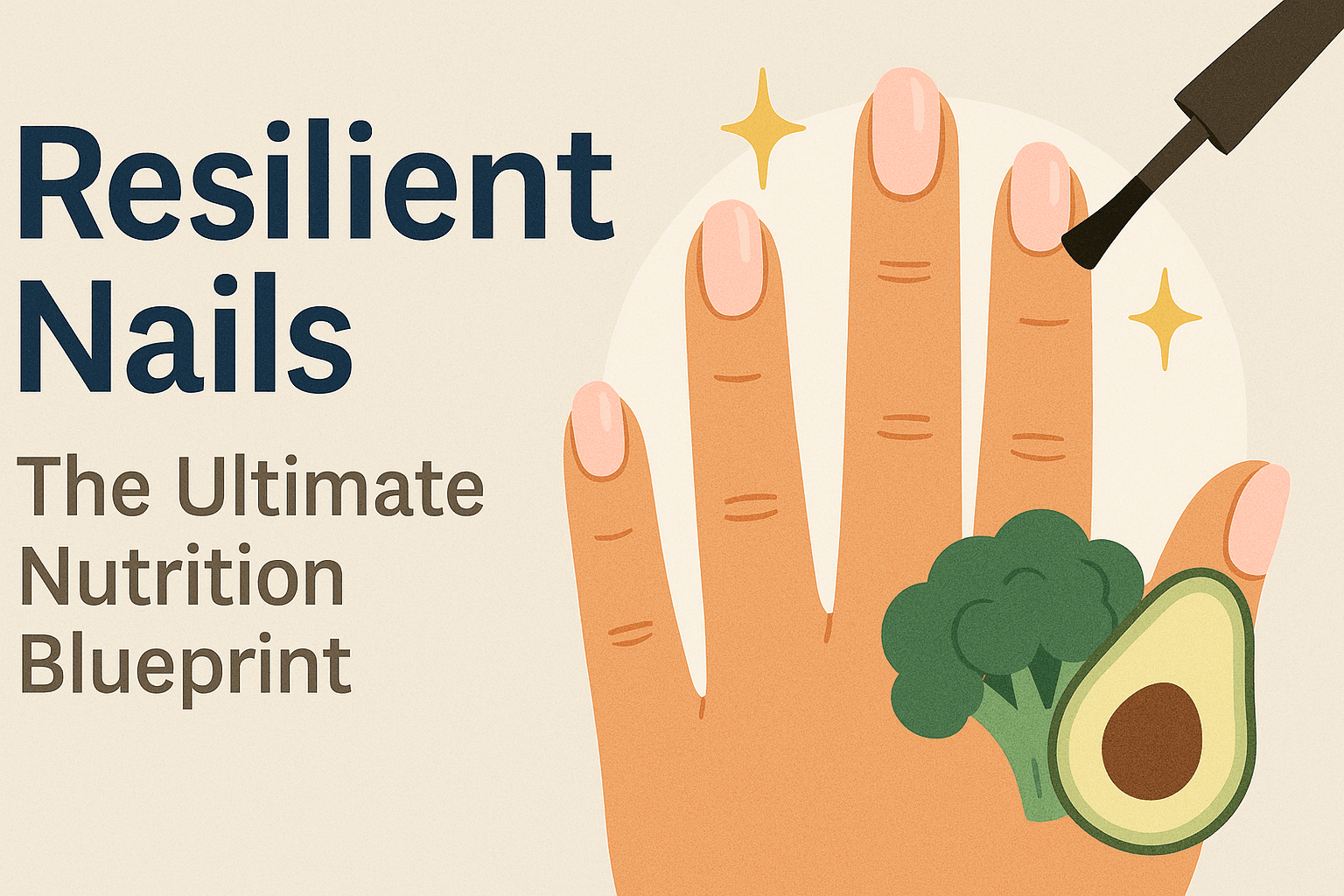Strong Strands: Introducing the Nutrition Guide to Healthy, Beautiful Hair from Root to End
Published on May 23, 2025

Your hair is not just a style. It’s beyond color, curl pattern and length. It is a living mirror of what is going on deep in your body — cell by cell, follicle by follicle.
Soft, glossy, vibrant hair doesn’t begin in the shower. It starts with your cells. With your mitochondria. With your meals. And with every decision you make to feed yourself well.
You can’t out-condition a nutrient deficiency. There is no oil, no serum, no mask to over-ride the impact of chronic inflammation, insulin resistance or hormone havoc.
This guide will walk you through: What interrupts the hair growth cycle The top nutritionist- and dermatologist-recommended nutrients for hair fall and breakage Daily rhythms and rituals that enhance follicle resilience A science-backed roadmap to healthier hair — from the inside out
The Science of a Strand Hair is made of keratin — a sulfur-rich protein formed from amino acids. Every strand sprouts from a follicle, nourished by tiny capillaries. It is a living structure, and needs nutrients to thrive.
Hair grows in three stages: Anagen (growth): lasts 2–7 years Catagen (transition): lasts 2–3 weeks Telogen (resting): lasts 2–4 months
When your system lacks nutrients or is inflamed, more follicles enter telogen, leading to visible thinning.
Why Hair Suffers First Hair is not essential for survival — your body prioritizes vital organs over follicles.
Hair needs: Steady protein intake Stable blood sugar Iron, zinc, biotin, B12, vitamin D Healthy fats for hormone balance Efficient nutrient absorption from the gut
Common causes of hair issues: Nutrient deficiencies (especially protein, iron, zinc, B vitamins) Hormonal imbalance (DHT, estrogen drops, cortisol) Crash dieting and low-calorie intake Gut dysfunction (low stomach acid, dysbiosis, celiac) Chronic inflammation and autoimmunity Iron deficiency (low ferritin levels) Thyroid dysfunction Medications and toxic load Chronic stress and poor sleep
Nutrients That Feed Healthy HairProtein Essential for keratin production Sources: eggs, poultry, lentils, fish, yogurt, bone broth Aim: 1.2–1.6g/kg of body weight
Iron (Ferritin) Transports oxygen to follicles Sources: red meat, liver, spinach, molasses Target ferritin: 50–70 ng/mL
Zinc Supports turnover, sebum balance Sources: oysters, chickpeas, beef, hemp seeds
B Vitamins Energy, methylation, red blood cells Sources: eggs, leafy greens, liver, legumes
Omega-3s Reduce inflammation, support membranes Sources: sardines, salmon, flax, walnuts
Vitamin D Regulates follicle cycles Sources: sunlight, cod liver oil, mushrooms
Silica & MSM Support collagen structure Sources: oats, cucumber, horsetail tea
Vitamin C & Antioxidants Support collagen, boost iron absorption, protect follicles Sources: citrus, berries, peppers, green tea
Beyond Food: Habits That MatterSleep 7.5–9 hrs, in darkness, without late eating
Movement Boosts scalp circulation and hormonal balance Try walking, yoga, strength training, inverted poses
Scalp Care Daily massage Weekly exfoliation Avoid heat, harsh brushes
Stress Cortisol breaks down collagen and slows hair growth Use breathwork, journaling, sauna, stillness
Environmental Detox Filter water, avoid synthetic fragrances Eat fiber-rich foods to support elimination
Seasonal Hair Shedding Expect more shedding in spring and fall Boost adaptogens and nutrients as seasons shift
Hair Recovery RoadmapLab tests to monitor: Ferritin, iron, D, thyroid, testosterone, insulin, GI MAP
Cyclical Nutrition Rotate proteins, bone broth, greens, seeds
Supplement Support Collagen + C (3 months on, 1 off) Zinc + copper (short term) Adaptogens (cycle every 8–12 weeks)
Topical Support Rosemary or peppermint oils Pumpkin seed oil (internal) Aloe vera (soothing + hydrating)
Sample 4-Week PlanWeek 1: Foundation Focus on protein, iron, and colorful veg
Week 2: Anti-inflammation Add turmeric, berries, walnuts, wild fish
Week 3: Gut Support Daily fermented foods, fiber, lemon water
Week 4: Regrowth Boost Include seaweed, liver, oysters, adaptogens
Final Thoughts: Nourish to Flourish You are safe. You are fed. You are supported.
Eat for your roots. Hydrate for your shine. Sleep for your recovery. And breathe for your balance.
Healthy hair isn’t just about how you look — it’s a reflection of deep internal vitality.








